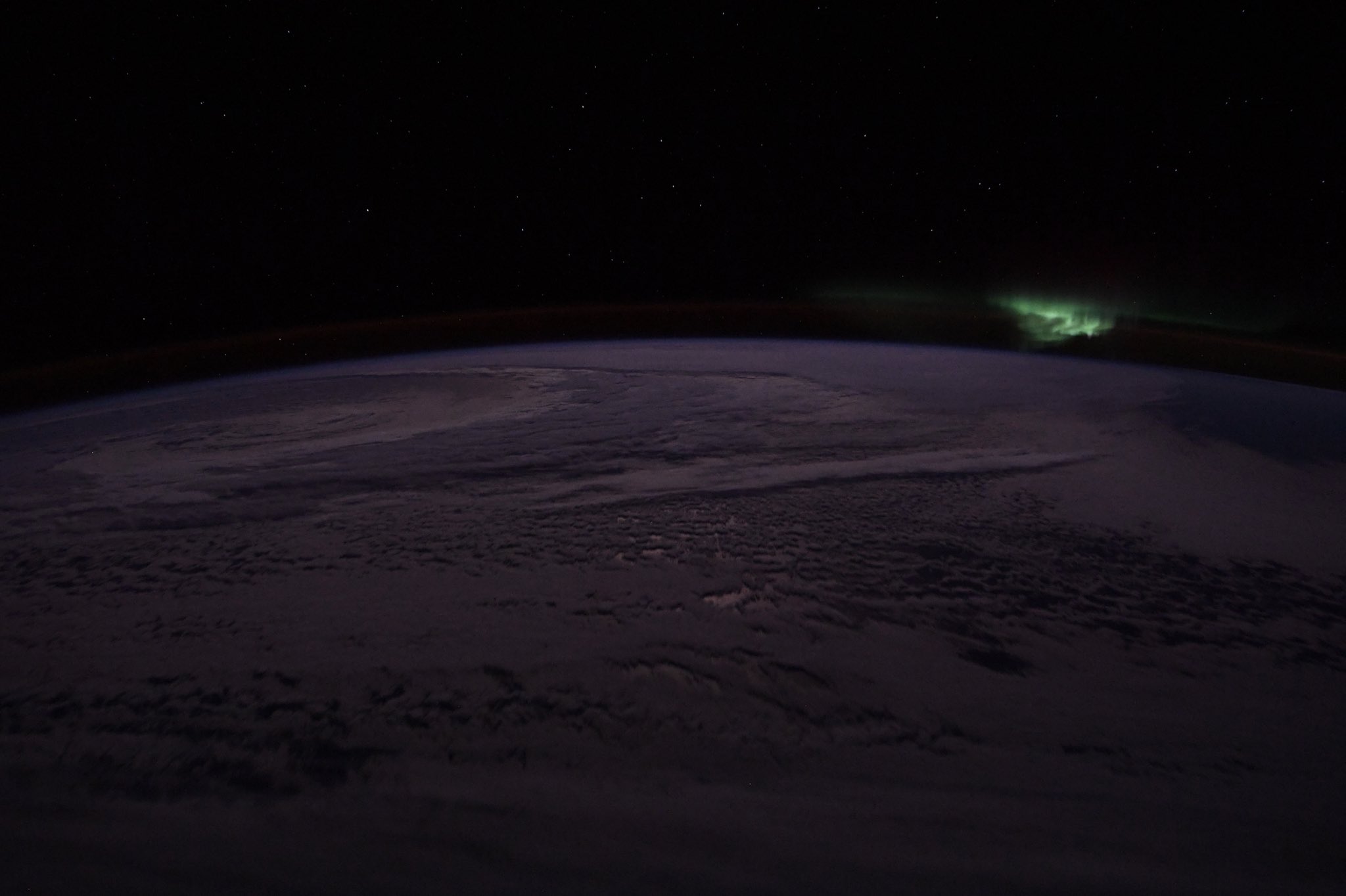[:ja]クリスティーナ・コッシュ宇宙飛行士がISSから撮影した夏至の日の南極のオーロラです。南極はちょうど真冬で、極夜が続いています。

オーロラは、天体の極域近辺に見られる大気の発光現象です。発生原理は、太陽風のプラズマが地球の磁力線に沿って高速で降下し大気の酸素原子や窒素原子を励起することによって発光すると考えられています。光(可視光)以外にも各種電磁波や電流と磁場、熱などが出ますが、音(可聴音)を発しているかどうかには議論があります。両極点の近傍ではむしろ見られず、オーロラ帯という楕円上の地域で見られやすいです。
南極点で観測されたオーロラの様子はこちらです。

参考文献: ‘s Tweet
地球俯瞰画像を見る: LiVEARTH
[Earthview Wonders] No.795: Aurora Over Antarctica🇦🇶
Astronaut Christina Koch captured from ISS beautiful aurora over Antarctica on the Summer Solstice. The Antarctica is in the mid-winter and experiencing polar night (long winter night).

An aurora, referred to as polar lights, northern lights, and southern lights, is a natural light display in the Earth’s sky, predominantly seen in the high-latitude regions (around the Arctic and Antarctic). Auroras are the result of disturbances in the magnetosphere caused by solar wind. These disturbances are regularly strong enough to alter the trajectories of charged particles in both solar wind and magnetospheric plasma. These particles, mainly electrons and protons, precipitate into the upper atmosphere (thermosphere/exosphere). The resulting ionization and excitation of atmospheric constituents emits light of varying color and complexity.
The local scenery of aurora over Antarctica on the ground is as follows.

Reference: ‘s Tweet
See earthview photo gallery: LiVEARTH[:en][Earthview Wonders] No.795: Aurora Over Antarctica🇦🇶
Astronaut Christina Koch captured from ISS beautiful aurora over Antarctica on the Summer Solstice. The Antarctica is in the mid-winter and experiencing polar night (long winter night).

An aurora, referred to as polar lights, northern lights, and southern lights, is a natural light display in the Earth’s sky, predominantly seen in the high-latitude regions (around the Arctic and Antarctic). Auroras are the result of disturbances in the magnetosphere caused by solar wind. These disturbances are regularly strong enough to alter the trajectories of charged particles in both solar wind and magnetospheric plasma. These particles, mainly electrons and protons, precipitate into the upper atmosphere (thermosphere/exosphere). The resulting ionization and excitation of atmospheric constituents emits light of varying color and complexity.
The local scenery of aurora over Antarctica on the ground is as follows.

Reference: ‘s Tweet
See earthview photo gallery: LiVEARTH[:]